Today’s Current Affairs: 25th Jul 2023 for UPSC IAS exams, State PSC exams, SSC CGL, State SSC, RRB, Railways, Banking Exam & IBPS, etc
Table of Contents
Mutual Recognition Agreement (MRA) : India And Australia

India and Australia have formed a joint working group to explore the possibility of a mutual recognition agreement (MRA) that would facilitate Indian whiskey makers’ access to the Australian market.
- Currently, Australian rules require whiskey to be matured for two years before being labelled as such, which poses a disadvantage for Indian liquor exporters who do not have a similar requirement.
- Indian companies argue that spirits mature more quickly in India’s warmer climate, and the two-year maturation rule restricts their access to a market with a significant Indian population and growth potential.
Mutual recognition agreement (MRA):
- A Mutual Recognition Agreement (MRA) is a formal agreement between two or more countries or trading partners.
- It allows them to recognize and accept each other’s standards, regulations, and conformity assessment procedures for specific products or services.
- By doing so, MRAs aim to facilitate trade and market access by reducing redundant testing, certification, and inspection requirements.
- The formation of the group comes after Australia got duty-free access for its high-end wines under the Economic Cooperation and Partnership Agreement (ECTA), between India and Australia.
Chandra Shekhar Azad Birth Anniversary:

On July 23rd, we commemorate the birth anniversary of Chandra Shekhar Azad, an iconic and fearless freedom fighter of India.
- He was Born in Bhabhra village ,now in Alirajpur District of Madhya Pradesh in 1906, Azad joined Mahatma Gandhi’s non-cooperation movement at a young age of 15 and adopted the name “Azad” as a symbol of his defiance against British rule.
- He became a prominent member of the Hindustan Socialist Republican Association (HSRA), a revolutionary group dedicated to armed struggle against the colonial government.
- Azad was also involved in daring acts of resistance, including the Kakori train robbery.
- He was Known for his organizational skills and mastery of disguise, he pledged to never be captured alive.
- Tragically, he lost his life on February 27, 1931, in a fierce gunfight with the police.
Bal Gangadhar Tilak Birth Anniversary:
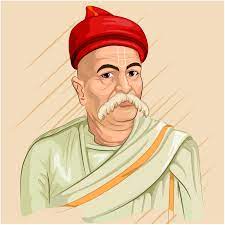
The Prime Minister of India has paid tributes to Bal Gangadhar Tilak on his Jayanti on 23rd July,2023.
- Bal Gangadhar Tilak, born on 23rd July 1856, was a freedom fighter, lawyer, and educationist known as Lokmanya Tilak.
Founder of the Deccan Education Society in 1884, he also established the Fergusson College in 1885. - Tilak emphasized the need for self-rule or swarajya and popularized the slogan “Swaraj is my birthright and I shall have it!”
- Tilak joined the Indian National Congress in 1890 and played a significant role in the Surat Split in 1907, advocating complete independence or swarajya.
- He propagated the Swadeshi and Boycott Movement to promote Indian self-reliance.
- Tilak founded the All-India Home Rule League in April 1916, aiming for Hindu-Muslim unity through the Lucknow Pact in 1916.
- He was Known for his newspapers Kesari (Marathi) and Mahratta (English) and authored books like Gita Rhasya and Arctic Home of the Vedas.
- Bal Gangadhar Tilak passed away on 1st August 1920, leaving behind a significant contribution to India’s freedom movement.
World Fragile X Day 2023:
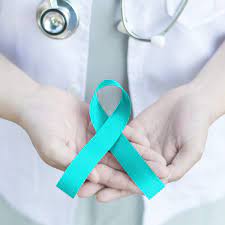
The World Fragile X Awareness Day is marked on 22nd July every year, started in 2021 to raise awareness about the rare genetic illness, Fragile X or Martin-Bell syndrome.
- Fragile X syndrome (FXS) is an inherited genetic disease passed down from parents to children that causes intellectual and developmental disabilities.
- FXS is the most common hereditary cause of mental disability in boys. It affects 1 in 4,000 boys.
- It’s less common in girls, affecting about 1 in every 8,000. Boys usually have more severe symptoms than girls.
- People with FXS usually experience a range of developmental and learning problems.
- The disease is a chronic or lifelong condition. Only some people with FXS are able to live independently.
- FXS is caused by a defect in the FMR1 gene located on the X chromosome.
- The FMR1 (Fragile X Mental Retardation 1 gene) gene is located on the X chromosome in humans.
- It is responsible for producing a protein called FMRP (Fragile X Mental Retardation Protein), which plays a crucial role in normal brain development and function.
- Women who are carriers are at an increased risk for premature menopause, or menopause that starts before the age of 40.
- Men who are carriers are at increased risk for a condition known as Fragile X Tremor Ataxia Syndrome (FXTAS).
Report On Roadmap Of Solar Energy For Universal Energy Access:
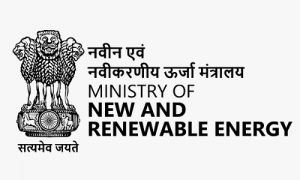
The Ministry of New and Renewable Energy (MNRE), in partnership with the International Solar Alliance, unveiled the report on ‘Roadmap of Solar Energy for Universal Energy Access’ developed under India’s G20 presidency in 2023 showcases how solar energy can play a key role in achieving electricity access and providing socio-economic benefits globally.
- The roadmap is unveiled during the 4th G20 Energy Transition Working Group held in Goa.
- It focuses on achieving Universal Energy Access by 2030 and highlighted the crucial role of solar mini grids in driving sustainable energy solutions.
Highlights of the Report:
- The roadmap emphasizes solar energy as a key solution to achieve Universal Energy Access by 2030.
- It identifies around 59% (396 million people) of the unelectrified population best suited for electrification through solar-based mini-grids.
- Approximately 30% of the unelectrified population (203 million people) can be electrified through grid extensions, and the remaining 11% of the unelectrified population (77 million people) through Decentralized Renewable Energy solutions.
- A total investment of around USD 192 billion is required to accomplish the electrification goals, distributed among solar-based mini-grids, solar-based decentralized renewable energy solutions, and grid extensions.
- Viability gap funding of around 50% (USD 48.5 billion) is needed to support mini-grid deployment.
- The roadmap underscores the importance of addressing challenges related to policies, regulations, and financial risks for successful and sustainable scaling up of solar energy solutions.
- It highlights the need for technical and financial expertise, skill development, and awareness creation in energy access-deficit regions to drive electrification initiatives.
- The report advocates for increased investments, ecosystem development, and optimal resource utilization to accelerate universal energy access.
- Integration of solar PV-based cooking solutions with electrification initiatives is emphasized as a way to enhance energy access in remote and underdeveloped areas.
Double Asteroid Redirection Test (DART) Mission:
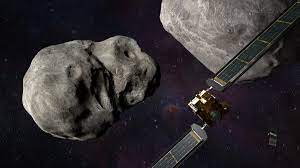
Months after the Double Asteroid Redirection Test (Dart) mission crashed into asteroid Dimorphos, the Hubble telescope recently observed boulders escaping out.
- DART Mission was a spacecraft designed to test a method of deflecting an asteroid for planetary defense, using the “kinetic impactor” technique ,in simplest terms means smashing a thing into another thing.
- DART was the first-ever space mission to demonstrate asteroid deflection by kinetic impactor.
- The target of the spacecraft was a 160-meter-wide asteroid known as Dimorphos, which is a moonlet in orbit around the larger asteroid, Didymos.
- It was launched in November 2021.
- DART spacecraft successfully collided with Dimorphos on 26 September 2022, altering the asteroid’s orbit by 33 minutes.
- It is the first-time humanity intentionally changed the motion of a celestial object in space.
- Boulders is a geological term for a rock fragment that is larger than 25.6 centimetres (10.1 inches) in diameter.
- Boulders can be made up of various types of rocks, including igneous, sedimentary, and metamorphic rocks.
Pradhan Mantri Fasal Bima Yojana : Latest Data

The latest data tabled in the Parliament by Union Minister for Farmers’ Welfare shows that agriculture insurance premium has been going up while claims payment is down under the Pradhan Mantri Fasal Bima Yojana.
- Pradhan Mantri Fasal Bima Yojana was launched in 2016 and replaced all the prevailing yield insurance schemes in India.
- This scheme is being administered by the Department of Agriculture, Cooperation and Farmers’ Welfare under the Ministry of Agriculture, along with empanelled general insurance companies.
- Aim is to support production in agriculture by providing affordable crop insurance to ensure comprehensive risk cover for crops of farmers against all non-preventable natural risks.
- The scheme provides coverage for the entire cropping cycle, from pre-sowing to post-harvest and midseason adversities.
- Objectives:
- Providing financial support to farmers suffering crop loss/damage arising out of unforeseen events;
- Stabilizing the income of farmers to ensure their continuance in farming;
- Encouraging farmers to adopt innovative and modern agricultural practices;
- Ensuring flow of credit to the agriculture sector, which will contribute to food security, crop diversification and enhancing growth and competitiveness of the agriculture sector besides protecting farmers from production risks.
Cannabis Medicine Project:
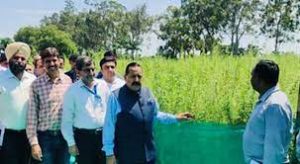
Union Minister of State (Independent Charge) Science & Technology said that Jammu is going to pioneer India’s first Cannabis Medicine Project.
- Cannabis Research Project’ of CSIR-IIIM Jammu is a first of its kind in India initiated under the leadership of Science & Technology Ministry in Private Public Partnership with a Canadian firm, which has a great potential to put substance of abuse for the good of mankind especially for patients suffering from neuropathies, cancer and epilepsy, malignancies.
- This project of CSIR-IIIM is also important from the perspective of Atma- Nirbhar Bharat as it will be able to produce export quality drugs meant for different kinds of neuropathies, diabetic pains etc.
- This project will explore the therapeutic properties of Cannabis, a plant which is otherwise prohibited and known for abuse.
Cannabis Cultivation:
- Cannabis, weed, pot, and marijuana all refer to the same group of plants known for their relaxing and calming effects.
- Cannabis contains at least 120 trusted Source active ingredients, or cannabinoids. The most abundant ones are cannabidiol (CBD) and delta-9-tetrahydrocannabinol (THC).
- Cannabidiol (CBD) – This is a psychoactive cannabinoid, yet it’s non-intoxicating and non-euphoric.
- THC- This is the main psychoactive compound in cannabis.
National Tele Mental Health Programme:

The union health ministry said the Tele-Manas helpline under the National Tele Mental Health Programme has received over 200,000 calls since its launch in October 2022.
- Tele Mental Health Assistance and Networking Across States (Tele MANAS) has been launched during October 2022.
- It aims to provide free tele-mental health services all over the country round the clock, particularly catering to people in remote or under-served areas.
- There are 42 active Tele Manas cells across 31 states and Union Territories.
- The service is accessible through the toll-free numbers with options to choose preferred languages (20 languages included till now).
- Tele-MANAS will be organised in two tier system:
- Tier 1: It comprises of state Tele-MANAS cells which include trained counsellors and mental health specialists.
- Tier 2: It will comprise of specialists at District Mental Health Programme (DMHP)/Medical College resources for physical consultation and/or e-Sanjeevani for audio visual consultation.
- Services offered by Tele MANAS:
- Tele counselling by trained counsellors.
- Tele Consultation by Mental Health professionals when required.
- Referral Services to other Mental Health Establishments such as Medical Colleges, District Mental Health Program (DMHP) services and speciality institutes.
National Mental Health Programme (NMHP):
- The Government of India has launched the National Mental Health Programme (NMHP) in 1982, with the following objectives:
- To ensure the availability and accessibility of minimum mental healthcare for all in the foreseeable future, particularly to the most vulnerable and underprivileged sections of the population;
- To encourage the application of mental health knowledge in general healthcare and in social development;
- To promote community participation in the mental health service development and to stimulate efforts towards self-help in the community.




